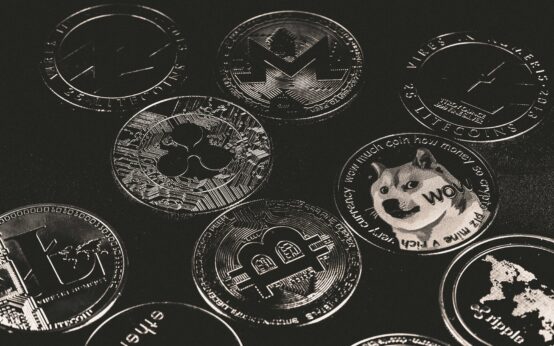January 23, 2025 – In just over a decade, blockchain technology has evolved from a niche concept in the world of cryptocurrency to a mainstream force driving innovation across industries. From finance to supply chains, healthcare, and even voting systems, blockchain has proven to be a versatile, powerful tool for improving transparency, security, and efficiency. As we move further into 2025, the potential applications for blockchain continue to expand, and the technology is quickly becoming a cornerstone for businesses and governments alike.
Blockchain: A Primer on How It Works
At its core, blockchain is a decentralized, distributed ledger that records transactions across multiple computers in a way that ensures the data cannot be altered retroactively. This immutability makes blockchain a perfect solution for situations where trust, transparency, and security are paramount.
In simple terms, blockchain works by breaking down transactions into blocks, which are linked together in a chain. Each block contains a record of a set of transactions and is secured using cryptography. Once a block is added to the blockchain, it becomes part of an unalterable record, ensuring the integrity of the data stored within it.
This decentralized structure means there is no central authority controlling the data, making it resistant to fraud, censorship, and manipulation.
The Growth of Blockchain Beyond Cryptocurrency
While blockchain technology initially gained fame through its association with cryptocurrencies like Bitcoin and Ethereum, its applications are now far broader. In 2025, businesses and governments around the world are leveraging blockchain for a wide range of use cases, all aimed at solving problems related to trust, transparency, and efficiency.
1. Supply Chain Management
One of the most impactful applications of blockchain technology is in supply chain management. Blockchain’s ability to provide real-time tracking of products from origin to final consumer is changing how companies manage logistics and inventory.
Walmart, Nestlé, and IBM are leading the way by using blockchain to track food products’ journey from farm to store, ensuring quality control, reducing waste, and improving efficiency. For example, IBM’s Food Trust Network allows companies to trace the entire lifecycle of a food product, from harvest to retail, ensuring consumers get the freshest and most ethically sourced products. In case of a product recall, blockchain can pinpoint the exact location of contaminated goods within minutes, helping prevent widespread health issues.
This kind of transparency is also being applied in the luxury goods and pharmaceutical industries, where counterfeiting is a significant concern. Blockchain enables businesses to verify the authenticity of high-value items like diamonds, artwork, and branded goods, providing customers with confidence in the products they purchase.
2. Healthcare: A Revolution in Data Security and Privacy
Blockchain is also making waves in the healthcare sector, where patient data security and privacy have long been major concerns. With blockchain, sensitive medical data can be securely stored in a decentralized manner, ensuring that only authorized parties can access the information.
For example, MedRec, a blockchain-based project, allows patients to store and share their medical records in a secure, transparent, and tamper-proof way. By using blockchain, medical institutions can improve the interoperability of health records, allowing doctors to quickly and accurately access a patient’s medical history, regardless of which hospital or clinic the patient visited. This ensures better care coordination and minimizes errors.
Moreover, blockchain technology can help pharmaceutical companies improve the traceability of drugs, ensuring that medications are genuine and have been stored and transported under the proper conditions, reducing the risk of counterfeits entering the market.
3. Decentralized Finance (DeFi): Redefining Financial Services
One of the most exciting developments in blockchain is the rise of Decentralized Finance (DeFi). Traditional finance relies on intermediaries like banks and brokers to facilitate transactions. DeFi, on the other hand, enables financial services to operate in a fully decentralized manner, without the need for middlemen.
In 2025, DeFi platforms like Aave, Compound, and Uniswap have become critical players in the financial ecosystem. These platforms use blockchain to offer services like lending, borrowing, and trading, where users can access liquidity without the need for traditional financial institutions. By cutting out intermediaries, DeFi not only reduces fees but also enables a broader range of people worldwide to access financial services.
DeFi protocols are also making waves in insurance, savings accounts, and asset management, where users can invest and earn yields directly from decentralized pools of capital, all secured by blockchain. This opens up financial opportunities to people who have traditionally been excluded from conventional banking systems, such as those in emerging markets or underserved regions.
4. Voting Systems: Securing the Future of Democracy
Blockchain’s ability to provide transparent, immutable records is also being explored for improving electoral systems. Voting systems, which are often prone to fraud and tampering, can benefit greatly from blockchain’s decentralized and transparent nature.
In places like Estonia, blockchain has already been implemented for secure digital voting, allowing citizens to vote remotely in national elections. The blockchain records each vote, making it virtually impossible to alter the outcome or tamper with the data.
As we look ahead, blockchain-based voting systems could become a key tool for increasing voter participation, ensuring election integrity, and enabling a more secure and transparent democratic process.
The Challenges Ahead: Scaling, Regulation, and Energy Use
Despite the tremendous potential, blockchain technology still faces several challenges that must be overcome for it to realize its full potential. One of the biggest obstacles is scalability—blockchain networks like Bitcoin and Ethereum have struggled to handle large transaction volumes without significant delays and high fees. However, recent developments, such as Ethereum’s transition to a more efficient proof-of-stake (PoS) consensus mechanism, are helping to address these scalability issues.
Another challenge is regulation. Governments worldwide are grappling with how to regulate blockchain-based technologies and cryptocurrencies. In 2025, many countries are beginning to establish clearer regulatory frameworks for blockchain and cryptocurrency, which will help foster innovation while protecting consumers and investors. However, inconsistent regulations across regions remain a challenge for businesses looking to adopt blockchain technology globally.
Finally, there is the issue of energy consumption. Proof-of-work blockchains, such as Bitcoin, require significant computational power, leading to concerns about their environmental impact. While proof-of-stake and other consensus mechanisms are much more energy-efficient, finding sustainable solutions for blockchain mining remains a critical area of development.
Conclusion: Blockchain’s Unstoppable Growth in 2025 and Beyond
Blockchain technology is rapidly transforming industries across the globe, and its growth shows no signs of slowing down in 2025. From improving the security and transparency of supply chains to enabling decentralized financial services and revolutionizing voting systems, blockchain is proving that it has far-reaching potential beyond cryptocurrencies.
As businesses and governments continue to explore blockchain’s capabilities, we can expect more innovation and adoption in the years to come. While challenges like scalability, regulation, and energy use remain, the solutions are already emerging, and blockchain’s potential for creating a more decentralized, transparent, and secure world is clearer than ever.
In a rapidly evolving digital landscape, blockchain technology is not just a trend—it’s a revolution that’s here to stay.



 Bitcoin Now: Fresh Insights, News, and Trends from the Crypto World
Bitcoin Now: Fresh Insights, News, and Trends from the Crypto World  Crypto Pulse: Bitcoin Price Trends, Trading Strategies, and Market Dynamics
Crypto Pulse: Bitcoin Price Trends, Trading Strategies, and Market Dynamics  Bitcoin Price Surges as Institutional Interest Hits New Highs in 2025
Bitcoin Price Surges as Institutional Interest Hits New Highs in 2025  How Cryptocurrency is Revolutionizing Traditional Business Models
How Cryptocurrency is Revolutionizing Traditional Business Models  A Safe Bet in Crypto: The New Bitcoin ETF That Guarantees 100% Downside Protection
A Safe Bet in Crypto: The New Bitcoin ETF That Guarantees 100% Downside Protection